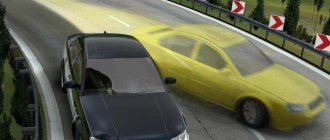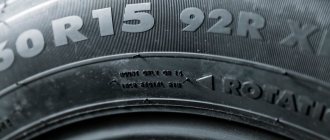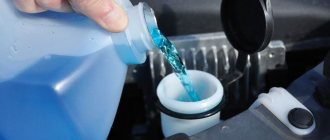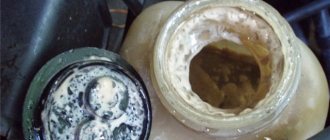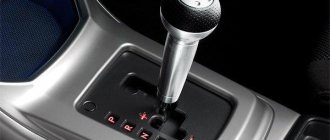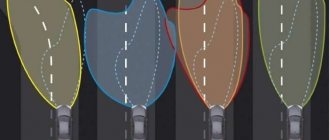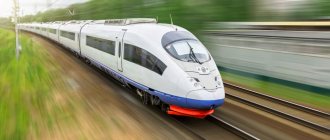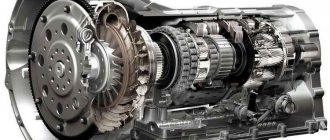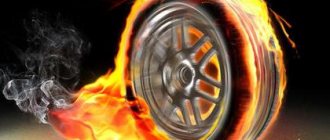When choosing tires, experienced drivers pay attention not only to driving comfort and economical operation of the tires. For traffic safety, the measures that tire manufacturers take to reduce such dangerous effects as slipping, ice sliding, and aquaplaning are of decisive importance.
What is aquaplaning and its dangers?
The hydroplaning effect occurs at high speeds due to the appearance of a hydrodynamic wedge between the water-filled road surface and the tire contact patch. The incompressibility of water causes the car to slide into an uncontrolled slide. The best example of aquaplaning is the use of the effect in the prototype of modern water skis - the aquaplane. A board with a smooth bottom surface, tied behind the boat, easily lifts a heavy athlete to the surface of the water when speed increases. In water sports, the lifting force of aquaplaning is used in surfing, windsurfing.
When the car is moving, the presence of a layer of water that causes aquaplaning means loss of traction and loss of control.
The effect occurs at speeds at which the tire does not remove water from the contact patch. The critical speed values depend on the thickness of the water film, the depth of the tread, its pattern, and the area of the contact patch. In field tests, tests showed that the hydroplaning effect appears at speeds of about 70 km/h.
A decrease in the critical speed of “floating” of wheels can occur when the tread wears out or the pressure in the tire is reduced. Worn tires (with reduced groove depth) are less able to push water out from under the tire. A tread worn to a residual depth of 1 mm retains 11% of its normal working area. The same decrease in critical speed occurs when tires are insufficiently inflated.
Hydroplaning is especially dangerous after driving through muddy areas that clog the tread grooves. In this case, aquaplaning may occur at lower speeds; when exiting a puddle, the car may fall into an uncontrolled lateral slide (in the event of an uneven road or a close turn), aggravated by slippery mud.
In winter conditions, aquaplaning is no less dangerous. In principle, special winter tires are better protected against its occurrence by having a larger tread pattern. But with a layer of water on melting ice, the situation becomes more complicated. Soft winter tires act like an underinflated wheel; small pieces of ice and slush clog the tread.
The effect of sliding on ice occurs every time you exit hydroplaning mode. Therefore, it is recommended to install narrow tires with deep tread and wide grooves. An addition to the tread depth is the height of the studs (for studded tires), although the studs do not directly affect the occurrence of aquaplaning.
How does aquaplaning occur?
Different types of vehicles experience hydroplaning in very different ways. It depends on what kind of drive system the car has - front or rear.
Rear-wheel drive cars go into an uncontrolled skid due to hydroplaning, always from the front axle. This process is subsequently transferred to the rear axle. You can feel the occurrence of this phenomenon by the “light” steering wheel, which does not receive any response to any rotation. The car quickly loses control, significantly increasing the chances of a serious accident.
In cars with front-wheel drive, aquaplaning begins, on the contrary, from the rear axle, moving forward. Many drivers make a fatal mistake - they try to brake, and this instantly turns into skidding and spontaneous sliding of the car. The correct algorithm for action in such a situation is the need for a slight gradual acceleration.
What to do if aquaplaning occurs
Learning the correct driving technique when hydroplaning occurs is quite difficult. There are no special training grounds for car enthusiasts or training methods. Behavioral skills can only be developed through driving experience (sometimes sad). In real driving, aquaplaning manifests itself in the fact that when driving through a puddle, the car does not respond to the brake pedal and stops listening to the steering wheel (the steering wheel becomes “wobbly”, turns easily, there is no feedback).
The most dangerous thing in such a situation is feverish movements of the steering wheel with a large amplitude. Changing the angle of direction of the wheels when the speed drops, when leaving a puddle, or when traction occurs, will cause the car to suddenly throw to the side. You should try to maintain a straight line until traction occurs, and then level the car.
Video: What is aquaplaning and how important is tread wear?
Actions that are usual when skidding on ice (turning the steering wheel in the opposite direction, adding gas) are unacceptable; sharply pressing the brakes or accelerator does not produce results. Any sudden movements can become dangerous when recovering from hydroplaning. Reducing speed becomes the most effective way to get out; the car, losing speed, “sinks” and gains traction. You need to brake with the engine, reverse gear shifts. A natural loss of speed is also possible.
Preventive action:
- compliance with driving rules;
- purchasing reliable tires;
- preventive monitoring of tire wear (reduces the likelihood of aquaplaning by up to 50%);
- visual control of quality and road condition;
- Constant movement at a safe speed; when entering a puddle, reduce speed.
How to prevent hydroplaning and what to do if it occurs?
The main condition for preventing hydroplaning is maintaining a reasonable speed limit. If you see that there is water on the road surface, immediately slow down. In rainy weather there is no need to rush.
If hydroplaning cannot be avoided, do not panic under any circumstances. There is no need to mindlessly press all the pedals and turn the steering wheel in different directions. You need to slow down smoothly, trying to slow down the car using the engine. Remember, any sudden movements will only worsen your situation.
How tire manufacturers are dealing with this
Manufacturers of sports tires were the first to begin the fight against aquaplaning. In auto racing, enormous speeds cause the effect to appear even with a film of water of one millimeter. Losing control has fatal consequences, so race car drivers change tires at the slightest hint of a change in weather. In heavy rain, with a constant film of water on the track, sports racing is often stopped.
Special rain protectors were invented for sports tires, which gradually migrated to mass-produced tire products. The design of rain protectors uses directional, asymmetrical patterns, deep water evacuation channels, and branched drainage grooves. The specialization of tires is reflected in their name, pictograms in the marking, the words “rain”, “water”, “aqua”.
Pioneers in the design of special drainage protectors were Michelin, Dunlop, Pirelli & C, Goodyear. The Finnish manufacturer Nokian Tires is a leader in the design of winter tire treads with the effect of preventing aquaplaning.
Competition among manufacturers is expressed in the invention of new tread patterns and special rubber compounds. Rain protectors are distinguished by the location of drainage grooves (herringbone, butterfly shapes), deep knife-shaped diagonal slots crossing the side grooves, and the number of deep longitudinal water evacuation channels. Thus, the tread of the Yokohama Geolandar rain tire is equipped with two ribs, diagonal curved grooves, and four longitudinal channels. In addition to preventing aquaplaning, the tread is equipped with wide shoulder areas that increase slip resistance.
At the same time, the tread design does not worsen other parameters of the tire (noise level, lateral slip, braking distance, rolling resistance). For all these parameters, test rating tests of tire products are carried out, which include tests for longitudinal and transverse aquaplaning. In complex tests, new Goodyear and Pirelli tire models lose points in aquaplaning, having excellent snow grip, good braking performance, and dynamic characteristics.
In last year's test, the best versatility of winter tires (with good resistance to aquaplaning) was shown by Dunlop SP Winter Sport, Pirelli Winter 210SP, Continental Winter Contakt, Michelin Pilot Alpin, GoodYear Eagle Ultra Grip tires. Ordinary car enthusiasts rarely choose to buy special rain tires due to the high cost. During constant high-speed traffic (regardless of the weather), its installation significantly increases safety.
How to avoid hydroplaning?
Important rules that will prevent the planning effect:
- observe the speed limit, the maximum speed should not exceed 70 km/h;
- check the tire pressure, it should be the same everywhere;
- the remaining tread thickness should not be less than the required values;
- avoid sudden acceleration, braking and sudden steering;
- do not overload the trunk;
- If you see a puddle in front of you, slow down in front of it.
Signs of car tires that are resistant to aquaplaning
Not every tire is capable of providing maximum water drainage. For example, the world-famous company Continental has special “rain” tires in the Uniroyal Tires series. Long-term tests revealed the best efficiency in removing water from the wheels, maximum traction and stable control over the vehicle's steering. The main thing to remember is that no matter how high-quality the tire is or what latest safety technologies the car is equipped with, no one is immune from hydroplaning. Only compliance with the speed limit, distance and interval, as well as maintaining the vehicle in good condition will avoid the harmful effects of aquaplaning.
5 / 5 ( 3 voices)
What causes loss of grip?
In order to be able to, if not prevent, then at least minimize the consequences of an accident, you need to know the conditions favorable for its occurrence. As mentioned above, the most important factor is high speed. Any rubber has a pattern of drainage grooves, the purpose of which is to remove water from the area in contact between the wheel and the road. If a car drives at full speed through a large amount of water, then you can’t count on them. They are not able to remove such a volume of water from under the wheel in just a few seconds.
Therefore, a layer of water appears between the wheel and the road surface, breaking the clutch. The second factor is the thickness of the water layer. The deeper the puddle and the higher the speed, the less chance of avoiding hydroplaning. The only thing you can do is slow down in advance.
The condition and depth of the tire tread is the third factor that has a tremendous impact on the outcome of driving through puddles. Worn and shallow grooves and sipes of the tire cannot cope with the water mass, which means an accident is almost inevitable. Therefore, before picking up speed, it is better to soberly assess the condition of your tires.
Some drivers prefer to put sports tires on their car, trying to achieve maximum grip on dry roads. However, reducing the grooves, which increases grip, will have the opposite effect in rainy weather and on wet surfaces. Hence the logical conclusion arises about the need for timely replacement of tires and their compliance with the season.
Indirect causes of a water wedge can be:
- unsatisfactory condition of the suspension;
- excess or lack of tire pressure;
- vehicle weight;
- condition of the road surface.
The better the road surface, the higher the risk of losing traction: the water layer is more evenly distributed over the surface, free of cracks, potholes and holes. Old roads seem to absorb moisture, passing it through defects and flaws in their coating.
Moreover, models with wide wheels are in the high-risk zone. Modern cars, with narrower wheels, can easily overcome a dangerous area without even noticing it. The smaller the contact area, the lower the risk.
Flat tires also increase the risk of an unpleasant situation. They will simply wash out, allowing water masses into the area of contact with the road. A faulty car suspension has a similar effect: worn shock absorbers, as a rule, are not rigid and elastic. This means the car will not be able to “snuggle” to the road. And the last factor: the lighter the car, the less the force of its own gravity will prevent the coupling from breaking.
